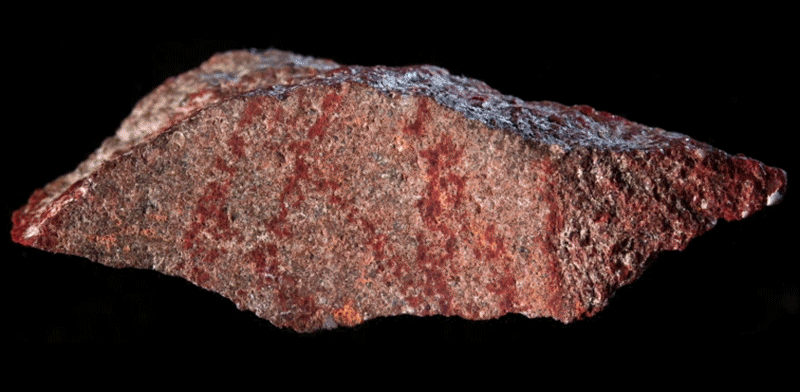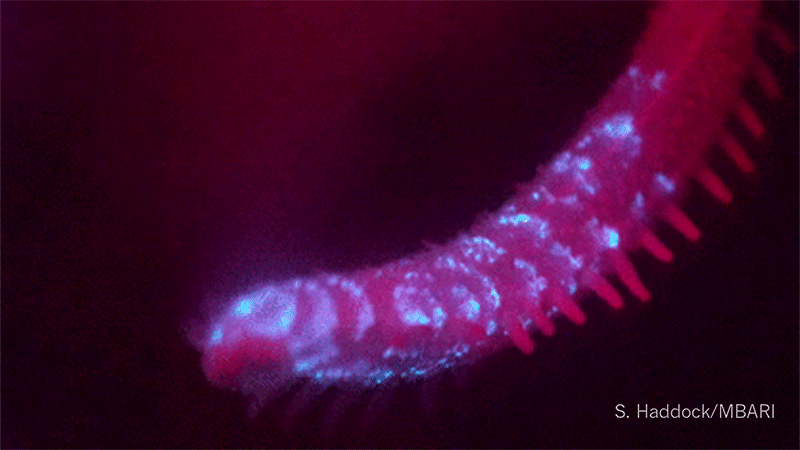Hello Nature readers,
Today we discover the world’s oldest drawing, hear that researchers have screened nearly every possible single-letter variation in the BRCA1 breast cancer gene and explore how thousands of scientists publish the equivalent of 1 paper every 5 days.

Ancient people used ochre crayon to draw on this rock. Credit: Henshilwood et al., Nature 2018
Stone Age ‘hashtag’ is world’s oldest drawing
A fragment of a criss-cross artwork made with crayon on stone is the oldest human drawing ever discovered. The 73,000-thousand-year-old design was found in South Africa’s Blombos Cave, where archaeologists had previously found an ancient artistic ‘toolkit’ that included shells with residues of ochre-rich paint. “If there is any point at which one can say that symbolic activity had emerged in human society, this is it,” says archaeologist Paul Pettitt.
Nature | 5 min read
Reference: Nature paper
Scientists check every variant of BRCA1
Researchers have screened nearly every possible single-letter variation in regions of BRCA1, a gene linked to breast and ovarian cancer. The study examined the effects of nearly 4,000 such variants on the survival of cells grown in the laboratory. Researchers hope to come to an understanding of which BRCA1 variants are linked to cancer and which are safe.
Nature | 4 min read
Reference: Nature paper
Europeans are living longer and getting heavier
Average life expectancy across Europe has increased by 1 year since 2012, but rising obesity rates could slow down or reverse those gains, says a World Health Organization (WHO) report. The report also notes that Europe is the best in the world at collecting health data, but it struggles to accurately capture the health problems of people in its lowest socioeconomic tiers, owing to a reliance on physician reporting and voluntary questionnaires.
Nature | 3 min read
Reference: The European health report 2018
Bioluminescent sea creatures caught on camera
Marine biologists are using extremely high-resolution cameras and ultra-sensitive sensors to film unprecedented footage of marine organisms in the wild. The cameras can see in near-dark conditions, capturing previously unrecorded behaviours and doing away with the need for bright lights that frightened sea life. Roughly three-quarters of marine organisms produce light — but we’re only beginning to learn what for.
Nature | 4 min read

When stimulated, this sea cucumber (Pannychia moseleyi) produces a frenzy of bioluminescent light.
FEATURES & OPINION
The scientists who publish every five days
More than 9,000 people published more than 72 papers in any one calendar year between 2000 and 2016, say the researchers, who analysed the Scopus database. Even after excluding physicists, who might be part of huge international teams, and researchers with Chinese and Korean names, which Scopus doesn’t disambiguate perfectly, 265 authors published the equivalent of 1 paper every 5 days. The three researchers who gathered the data — including John Ioannidis, no slouch himself in the numbers game — hasten to add that they’re not implying any inappropriate behaviour. A survey answered by 81 of the hyperprolific authors revealed common themes: team leadership, interdisciplinary work, collaboration, generosity and “sleeping only a few hours per day”.
Nature | 12 min read
2,566 |
The number of papers published between 2000 and 2016 by the single most prolific author in the study. |
Stop servers from using all the electricity
The most worrying models predict that electricity use by the information- and communications-technology ecosystem could exceed 20% of the global total by the time a child born today reaches their teens, with data centres using more than one-third of that. Already, data centres use an estimated 200 terawatt hours each year. That is more than the national energy consumption of some countries (but just 1% of global electricity demand). Researchers in academic labs and at some of the world’s wealthiest companies are exploring ways to keep the industry’s environmental impact in check, from streamlining computing processes to investigating better ways of keeping data centres cool.
Nature | 13 min read
Insights from Joan Argetsinger Steitz
Pioneering RNA researcher Joan Argetsinger Steitz, who won one of this year’s prestigious Lasker Awards, is also recognized for her support of women in science. She spoke to Scientific American about why RNA research is hot right now, why she feels bad when she puts her name on her students’ papers and what it was like being the first female grad student to work with controversial DNA discoverer James Watson. “It wasn’t that there weren’t any women in the lab,” she says. “There were lots of women in the lab, because Jim fervently believed that if men had attractive women around, they would want to come to the lab and get more done.”
Scientific American | 6 min read
Turn off digital distractions to get more done
Immunologist John Tregoning shares evidence-based life hacks to combat the distractions that are nibbling away at our ability to think big thoughts. Here’s how to tame your email, procrastinate smarter and learn to be productively bored.
Nature | 6 min read
